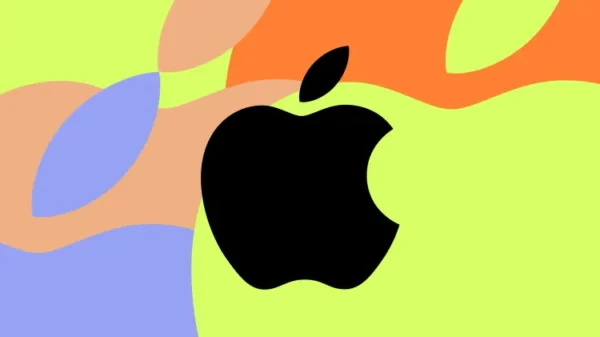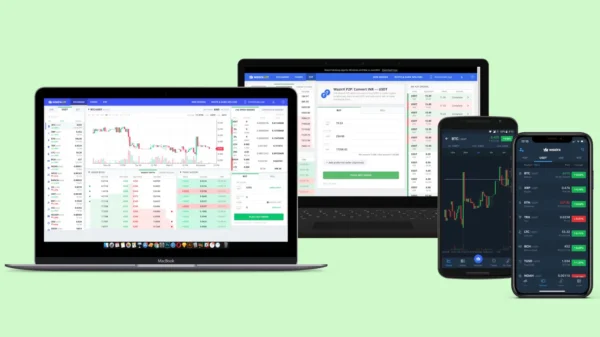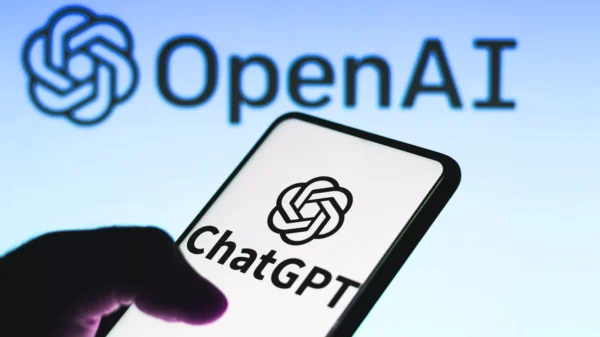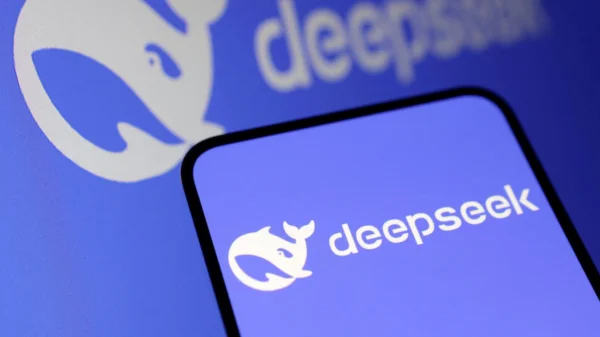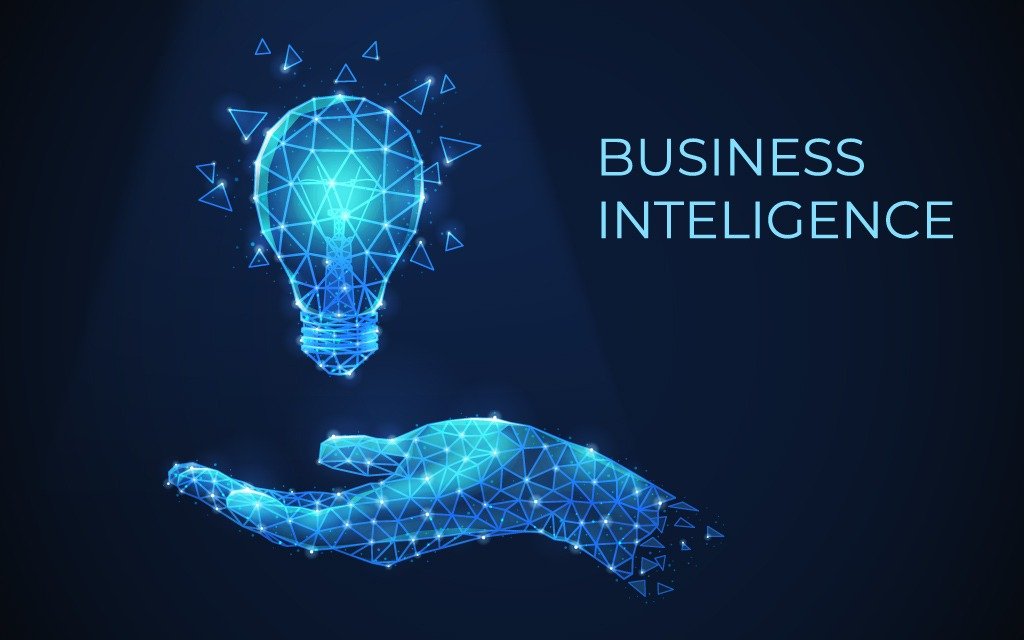Business Intelligence vs. Artificial Intelligence
Step into the digital arena where bytes transform into brilliance, where the dance of data leads us to the age-old crossroads of ‘BI versus AI.’ In a world awash with insights and possibilities, join us as we unravel the enigmatic tapestry that pits the retrospection of business intelligence against the futuristic pulse of artificial intelligence. Brace yourself, for the clash of these titans promises to reshape the very essence of decision-making.
Key takeaways:
Business intelligence (BI) focuses on past data for known insights.
Artificial intelligence (AI) predicts future trends using diverse data.
BI involves both human interpretation and historical analysis.
AI relies on algorithms for real-time decisions.
Choose BI for understanding the present and AI for anticipating the future.
Blend BI’s wisdom with AI’s foresight for informed choices.
In the vibrant tapestry of today’s business landscape, decisions are no longer shots in the dark; they’re beams of light forged from data. Business intelligence (BI) and artificial intelligence (AI) stand as the twin pillars of this enlightenment, casting their respective brilliance upon the ever-evolving stage of modern commerce.
Imagine this: you, the intrepid entrepreneur, seated at the helm of your enterprise. The winds of change gust with fervor, and your compass is data. That’s where business intelligence strides in with purpose. It’s the faithful historian, chronicling the past and the present. With a knowing glance at historical and current data, BI whispers sagely about what’s worked, what’s faltered, and what’s held steady. It’s your trusted guide, steering the ship with insights from seas already navigated.
But wait, there’s a new dancer in this data-driven soiree: artificial intelligence takes center stage. Unlike BI, AI isn’t content with simply illuminating the here and now; it seeks to step into the realm of prophecy and wield the power of foresight. Imagine an oracle consulting an ethereal realm of algorithms and patterns, then beckoning you with insights from a future not yet unfolded. AI is the soothsayer, anticipating trends, detecting subtle shifts, and shaping decisions with a brush dipped in predictions.
Now, picture them intertwined—a tango of technology. Business intelligence, the measured partner, provides the foundation with its historical narratives. Artificial intelligence, the spontaneous dancer, adds an air of unpredictability and flair to every move. As they swirl together, a symphony of data symphonically envelops decision-makers, harmonizing the wisdom of hindsight with the thrill of anticipation.
In the following pages, we’ll embark on a journey to decode this intricate dance between BI and AI. We’ll dissect their characteristics, unveil their applications, and shine a light on their strengths and limitations. We’ll explore how BI’s retrospective gaze contrasts with AI’s forward-facing gaze, how human intuition collaborates with machine autonomy, and how these two forces intertwine to elevate the art of decision-making.
So, join us in this exploration as we untangle the threads of perplexity, unmask the veils of mystery, and unveil the intricate interplay between business intelligence and artificial intelligence. As the spotlight shines on these enigmatic partners, we’ll illuminate not just the stage they share but also the limitless potential they hold for businesses seeking to navigate the ever-shifting currents of the data-driven world.
Understanding Business Intelligence (BI): Definition and Purpose
Ah, the mysterious world of business intelligence (BI), where numbers dance like fireflies in the night, revealing secrets that lie dormant in the folds of data. But what exactly is this phenomenon that seems to have taken the corporate stage by storm?
Imagine BI as a master storyteller, armed with the tales of the past and the whispers of the present. It’s like a digital historian, meticulously piecing together the narrative of your business’s journey through time. BI is the art of gathering, processing, and analyzing historical and current data, allowing us to peer into the rearview mirror of business operations.
Why does the BI exist? It’s the quintessential compass, pointing decision-makers towards the right path by showing where they’ve been and where they stand. Imagine steering a ship through stormy seas armed with a map of past voyages. That’s what BI provides—a compass forged from data, enabling strategic decisions that are rooted in the wisdom of experience.
In essence, business intelligence enables companies to scrutinize their past decisions, evaluate their impact, and optimize strategies for the present. It’s about observing the footprints left behind and using them to trace a map towards a more prosperous future.
So, in this age of digital dynamism, business intelligence stands as a sentinel, watching over the annals of your enterprise and ensuring that each step taken is a step informed by the past. Stay tuned as we further unravel the tapestry of BI, its characteristics, applications, and the luminous benefits it brings to the table.
Understanding Business Intelligence (BI): Characteristics and Applications
Ah, buckle up, my curious companions, for we’re about to dive headfirst into the electric universe of business intelligence (BI). It’s not just about numbers, graphs, and spreadsheets; it’s a symphony of data-driven insights that serenade decision-makers and whisper secrets hidden within the digits.
Picture BI as a seasoned detective, armed with an array of investigative tools. It’s the Sherlock Holmes of the data realm, meticulously collecting clues, connecting dots, and piecing together the puzzle of your business landscape. At its core, BI is all about harnessing data in various shapes and sizes, from structured databases to sprawling spreadsheets.
But wait, there’s more to this enigmatic entity! BI is a sorcerer of reports and dashboards, conjuring visual masterpieces that bring data to life. She’s a skilled linguist, fluent in the languages of querying and reporting, and adept at translating complex data into comprehensible narratives. Imagine your business data as a treasure trove, and BI as the cartographer who crafts the treasure map, highlighting the routes to glory.
Now that we’ve unraveled some of the mystique surrounding BI’s characteristics, let’s cast a spotlight on its versatile dance of applications. It’s like a chameleon, adapting to various business scenarios and painting them with hues of clarity.
In the realm of sales, BI becomes the oracle that reveals sales trends, customer behaviors, and market dynamics. It empowers marketing mavens by uncovering campaign performance, audience insights, and untapped opportunities. Finance wizards, too, find solace in BI’s embrace, using it to scrutinize financial statements, cash flows, and budget variances.
But hold onto your hats, because BI doesn’t stop there! From supply chain optimization to human resource management, its applications are as diverse as a tropical rainforest. It’s the guardian of data integrity, ensuring that decisions are made on the bedrock of reliable information.
Understanding Business Intelligence (BI): Benefits and Limitations
Hold onto your cognitive caps, dear readers, for we’re about to unravel the tapestry of benefits and limitations that adorn the enigmatic world of business intelligence (BI). It’s not just about dazzling dashboards and data-driven acrobatics; there’s a symphony of advantages and a gallery of constraints that dance beneath the surface.
Let’s begin with a dazzling display of the benefits that BI bestows upon the discerning minds of decision-makers. Imagine BI as a wizard’s wand, conjuring clarity out of the chaos of numbers. It’s the flashlight illuminating the dark corners of data, revealing insights that have the potential to shape the destiny of businesses.
First and foremost, BI is the grand conductor of data accuracy. It’s like having a trusted custodian for your data, ensuring that what you see is what you get. Say goodbye to the days of haphazard spreadsheets and erratic figures; with BI, precision becomes your ally.
But the magic doesn’t stop there. BI is the gateway to enhanced reporting, transforming mundane numbers into visual masterpieces. It’s like turning raw data into a captivating story, engaging decision-makers with its vivid narrative. Trends, patterns, and anomalies come to life, enabling proactive decision-making that leaves the realm of mere guesswork.
Now, as we bask in the glow of BI’s brilliance, it’s time to address the flip side of this data-driven coin: the limitations. Picture BI as a wise sage with a few quirks; it might not have all the answers, and its powers might wane under certain circumstances.
BI’s Achilles’ heel lies in its retrospective nature. While it’s a maestro at analyzing historical data, it stumbles when tasked with predicting the future. The crystal ball it gazes into is the past, which means its insights are limited to what has already occurred. As the business landscape hurtles towards the horizon of possibilities, BI’s predictive prowess falters.
Moreover, BI can become the unwitting architect of data silos. As different departments wield their data fiefdoms, sharing and collaboration might take a hit. This can lead to a fragmented view of the business, where decisions are made in isolated pockets, oblivious to the broader panorama.
Exploring Artificial Intelligence (AI): Definition and Purpose
Ladies and gentlemen, fellow explorers of the digital frontier, welcome to the captivating realm of artificial intelligence (AI), where the ordinary transforms into the extraordinary and machines don the cloak of cognitive prowess. Brace yourselves, for we’re about to embark on a journey through the labyrinth of AI’s definition and purpose, where the lines between human ingenuity and machine intelligence blur into a mesmerizing tapestry.
Imagine AI as the da Vinci of the digital age, crafting masterpieces not with a paintbrush but with algorithms and data. It’s not merely about imitating human intelligence; it’s about soaring beyond those boundaries, creating entities that can learn, reason, and make autonomous decisions. AI is the sentinel of innovation, stationed at the crossroads of technology and imagination.
Why does AI exist? It’s not just about dazzling parlor tricks or futuristic fantasies. AI emerges as the phoenix from the ashes of data overload and complexity. In a world where information floods in torrents, AI stands as the sentinel that tames the deluge. It’s about extracting meaning from the noise, discerning patterns from chaos, and translating data into actionable insights.
Think about AI as the compass guiding businesses through the fog of uncertainty. Its purpose extends far beyond parlor tricks; it’s the key to unlocking predictive analytics, autonomous decision-making, and the hallowed halls of machine learning. AI transforms data into the fuel that powers innovation, allowing organizations to propel themselves into the future armed with insights hitherto unattainable.
In a nutshell, artificial intelligence isn’t just a mirage; it’s the mirage creator, crafting vistas of possibility from the raw materials of data. As we venture deeper into the intricate tapestry of AI, get ready to witness its diverse applications, its intricate dance with business intelligence, and the formidable impact it’s forging on the landscape of decision-making. The journey has just begun, and the realms of AI are ripe for exploration.
Exploring Artificial Intelligence (AI): Benefits and Limitations
Hold onto your neural synapses, dear readers, for we’re about to embark on a rollercoaster ride through the riveting universe of artificial intelligence (AI). It’s a domain where machines metamorphose into mind-bending wizards, armed with algorithms that dance on the edge of reality. In this electrifying chapter, we shall unfurl the banners of AI’s mesmerizing benefits while unmasking the veils that conceal its formidable limitations.
Imagine AI as a cosmic librarian, sifting through the volumes of data that cloak our digital existence. It’s not just about calculations and computations; it’s a symphony of insights that resonates with the hum of ingenuity. AI’s prime directive is to augment human capabilities, to be the sorcerer’s apprentice that magnifies our cognitive prowess.
First and foremost, AI is the oracle of pattern recognition. It gazes into the swirling vortex of data and emerges with constellations of insights, revealing correlations and connections that would elude the most astute human observers. It’s the curator of predictive analytics, envisioning tomorrow based on the breadcrumbs of today.
But that’s not all; AI is the harbinger of adaptive learning. It’s like a digital chameleon, morphing and evolving as it processes new information. It stands at the threshold of self-improvement, tirelessly refining its algorithms to navigate uncharted territories.
As we bask in the glow of AI’s marvels, it’s essential to pull back the curtains on its limitations. Picture AI as a prodigious artist with a brush that occasionally slips. While it can dazzle us with portraits of ingenuity, it isn’t immune to imperfections.
One of AI’s Achilles’ heels is its dependence on data quality. Like a painter with a limited palette, AI’s brilliance dims when fed with subpar data. Bias and inaccuracies can creep in, casting shadows on the insights it generates.
Moreover, AI’s wizardry often requires a considerable investment of resources, both in terms of time and finances. Building and training AI models demands computational muscle and expertise, which might not be readily available to every business or organization.
As we tiptoe through the labyrinth of AI’s benefits and limitations, we must acknowledge its dual nature—a captivating magician that conjures marvels but also a humble apprentice that stumbles along the path of progress. Our journey into the heart of “BI versus AI” continues, where the two titans of data-driven decision-making lock horns, each showcasing its arsenal of strengths and vulnerabilities. Stay tuned for the riveting tales that lie ahead as our expedition pushes further into the depths of this data-driven odyssey.
Key Differences Between Business Intelligence and Artificial Intelligence: Nature of Data Analysis
Ladies and gentlemen, welcome to the heart of the labyrinth, where the dance of data takes center stage. In this chapter of our odyssey through “BI versus AI,” we shall unravel the enigma that lies at the core—the nature of data analysis that sets business intelligence (BI) and artificial intelligence (AI) on divergent trajectories.
Imagine business intelligence as a time traveler, navigating the annals of historical and current data. It’s an archaeologist of digits, unearthing the relics of past transactions, interactions, and trends. BI is akin to gazing into a mirror that reflects the journey your business has taken, allowing you to glean insights from the winding roads you’ve traveled.
BI thrives in the world of structured data, where rows and columns are the building blocks of revelation. It’s about slicing and dicing information, querying databases, and crafting intricate reports that paint a vivid picture of where you’ve been. Its essence lies in descriptive analytics, like a storyteller recounting tales of yore.
Now, prepare to be transported to a realm where the fabric of data morphs and bends to the will of intelligence itself. Artificial intelligence isn’t just about looking back; it’s about gazing into the crystal ball of possibility. AI is the harbinger of real-time analysis and predictive modeling, transforming data into the chariots that carry you forward.
AI wields the wand of pattern recognition, deciphering the hieroglyphics of data with unprecedented finesse. It’s not confined to structured databases; AI thrives on the unstructured, the messy, and the uncharted territories of information. It’s like having an oracle that gazes into the tea leaves of data, extracting visions of what’s to come.
Picture BI as the historian, recording the tales of yesteryear, while AI becomes the oracle, foretelling the chapters that are yet to be written. BI peers into the rearview mirror, offering insights grounded in the past and present, while AI extends its gaze to the horizon, painting a canvas of what lies ahead.
In the realm of BI, decisions are based on retrospection, like a navigator steering a ship by looking at the wake it leaves behind. On the other hand, AI steps into the shoes of a clairvoyant, predicting market shifts, consumer behaviors, and emerging trends before they ripple through the business landscape.
Key Differences Between Business Intelligence and Artificial Intelligence: Decision-Making Approach
Ladies and gentlemen, gather ’round as we unravel a central enigma in our expedition through the landscapes of “BI versus AI.” In this chapter, we peer into the looking glass of decision-making—how business intelligence (BI) and artificial intelligence (AI) traverse distinct avenues on the journey to informed choices, casting a spotlight on the essence of their decision-making approaches.
Imagine business intelligence as a sage council convening to analyze scrolls of historical data and present realities. It’s the assembly of scholars, poring over the chronicles of business events and transactions, deliberating on courses of action. BI is akin to a compass, guiding you through the labyrinth of options with insights drawn from the past and present.
BI’s decision-making approach revolves around the known—the decipherable patterns of what has been. It paints a portrait of business health based on historical performances and current metrics. It’s like drawing wisdom from ancient texts, where the words have already been written and the path is illuminated by the light of hindsight.
Now, let’s pivot our gaze to a realm where the landscape shifts with every breath, where decisions are made not just on facts but on probabilities and possibilities. Artificial intelligence stands as the visionary oracle, peering through the mists of uncertainty and charting courses where patterns are yet to fully emerge.
AI’s decision-making approach is akin to a meteorologist predicting the weather. It’s about recognizing the subtle shifts in the atmosphere and processing immense data streams to forecast the most likely outcomes. AI’s crystal ball gazes into the unknown, predicting the proverbial storms and sunshine that lie ahead and guiding decision-makers with its real-time insights.
Picture BI as the captain navigating a ship through familiar waters, carefully steering based on the known currents and landmarks. On the other hand, AI is the intrepid explorer, setting sail into uncharted territories and using the stars of data to plot a course through the cosmos of possibilities. BI anchors decisions in the past and present, while AI thrusts its gaze towards the future.
Key Differences Between Business Intelligence and Artificial Intelligence: Level of Automation
Ladies and gentlemen, data voyagers and curious minds, we’ve arrived at a juncture where the gears of automation hum and the symphony of technology crescendos. In this chapter of our odyssey through “BI versus AI,” we delve into the heart of the matter—the profound contrast in the level of automation between business intelligence (BI) and artificial intelligence (AI), where human hands grapple with the reins of control.
Imagine business intelligence as a seasoned cartographer, sketching maps and drawing paths with a steady hand. It’s like an artisan weaving a tapestry, with each thread a carefully chosen data point. BI thrives in the realm of manual craftsmanship, where human interaction fuels the process.
In BI’s world, data is the clay, and human hands shape its form. Data input, query formulation, and report generation all involve the human touch. It’s like crafting a mosaic, piecing together insights one fragment at a time. BI’s level of automation is akin to a guided tour, where human guides navigate the labyrinthine corridors of data.
Now, let’s pivot our gaze to a realm where algorithms orchestrate a symphony of automation, where machines flex their digital sinews and make decisions with minimal human intervention. Artificial intelligence stands as the conductor of this symphony, leading the instruments of data through intricate compositions.
AI’s level of automation transcends manual intervention. It’s like a clockwork maestro, analyzing data, learning from patterns, and making decisions in real time. AI doesn’t just guide; it takes the helm, steering the ship of decision-making through turbulent waters. It’s the realm of algorithms that unfurl their wings, flying solo in the boundless skies of data.
Picture BI as the diligent artisan who weaves patterns by hand, threading insights through human agency. Contrastingly, AI stands as the virtuoso musician who composes intricate melodies, conducting an orchestra of automated processes. BI’s touch is deliberate and nuanced, while AI’s touch is swift and efficient.
In this dance of automation, BI’s involvement is akin to that of an artist who paints with precision, while AI is the navigator who charts courses through the cosmos of data. As we navigate the labyrinth of “BI versus AI,” remember this contrast—a testament to the human touch that shapes one and the machine prowess that defines the other. Stay tuned, for our journey will lead us deeper into the intricacies of these two realms, unveiling more layers of their essence and the mesmerizing web of their differences.
Key Differences Between Business Intelligence and Artificial Intelligence: Scope of Insights
Ladies and gentlemen, brace yourselves for a voyage through the cosmic kaleidoscope of insights, where the worlds of business intelligence (BI) and artificial intelligence (AI) converge and diverge in a dance of revelations. In this chapter of our saga—”BI versus AI”—we unravel the threads that weave the intricate tapestry of insights, casting a spotlight on the profound contrast in the scope they offer.
Imagine business intelligence as the custodian of the past, like a curator in a gallery of data artifacts. It’s the sage historian, recounting tales of yesteryear and revealing the contours of events that have shaped your business. BI’s insights are retrospective, gazing into the rearview mirror to distill knowledge from the journey already traveled.
BI’s scope of insights is reminiscent of a time traveler’s journal, chronicling the rise and fall of trends, the ebb and flow of customer behaviors, and the rhythms of business operations. It paints a vivid picture of where you’ve been, offering a vantage point to analyze the twists and turns of the path behind.
Now, let us pivot our perspective to the realm of artificial intelligence—a realm where the crystal ball of data-driven intuition glows with an uncanny luminescence. AI isn’t bound by the confines of history; it extends its gaze beyond the horizon of what’s been, piercing through the veil of uncertainty.
AI’s scope of insights is akin to a telescope trained on the cosmic expanse of what lies ahead. It’s the fortune teller who whispers secrets about the future, predicting market trends, forecasting consumer preferences, and anticipating shifts before they unfold. AI’s insights are like constellations of possibility, painting a canvas of what could be.
Picture BI as the sage who unravels scrolls of ancient wisdom, deciphering the narratives etched in the data’s pages. Contrastingly, AI stands as the soothsayer who reads the omens in the data’s patterns, divining the paths that lie ahead. BI’s insights are an excavation of the known, while AI’s insights are a projection into the unknown.
In the grand tapestry of insights, BI offers a retrospective lens that peers into the past, while AI extends its visionary gaze towards the future. Our journey through the realms of “BI versus AI” continues, unraveling the layers of their essence, their capabilities, and the breathtaking mosaic of their differences. Stay curious, dear readers, for the revelations that await are poised to spark wonder and reshape your perception of decision-making in the digital age.
Key Differences Between Business Intelligence and Artificial Intelligence: Human Involvement
Ladies and gentlemen, welcome to the heart of the conundrum, where human minds and machine marvels collide in a symphony of decision-making. In this chapter of our exploration—”BI versus AI”—we delve into the intricate dance of human involvement, unraveling the threads that bind business intelligence (BI) and artificial intelligence (AI) to the realm of human agency.
Imagine business intelligence as a grand symposium where minds come together to dissect the intricacies of data. It’s the meeting of scholars, where human intuition and expertise cast their spotlight on numbers. BI’s journey is one of interpretation, where human sensibilities bridge the chasm between raw data and actionable insights.
In the realm of BI, human involvement is akin to a translator who deciphers the language of numbers, transforming them into narratives that decision-makers can grasp. BI’s insights are the tapestries woven by human hands, drawing meaning from the labyrinthine corridors of data.
Now, shift your gaze to the realm of artificial intelligence—a realm where machines ascend towards autonomy, guided by the algorithms of ingenuity. AI is like an apprentice who learns from the vast library of data, forging a path of decision-making with minimal human intervention.
AI’s dance with human involvement is an intricate one. It’s like a compass that, once set on its course, navigates the seas of data with autonomy. Human hands may shape the algorithms, but AI’s decisions emerge from its own neural fabric, learning, adapting, and predicting with a cadence uniquely its own.
Picture BI as the council of sages, where human minds convene to decipher data’s riddles. Contrastingly, AI stands as a prodigy, nurtured by human architects but venturing into the realm of autonomous decision-making. BI’s insights are a product of human cognition, while AI’s insights are a symphony composed by the digital maestro.
Choosing Between BI and AI: When and Why
Greetings, intrepid navigators of the digital labyrinth! We stand at a crossroads where choices echo with the resonance of strategy and the allure of insight. In this chapter of our voyage—”BI versus AI”—we cast a discerning gaze on the art of choosing between business intelligence (BI) and artificial intelligence (AI), unraveling the intricate threads that guide us to the crossroads and illuminate the path ahead.
Imagine standing in a grand chamber, surrounded by two enigmatic doors—BI on one side and AI on the other. Each door leads to a realm of data-driven decision-making, each with its own symphony of capabilities and constraints. The choice before us is as complex as a mosaic, each piece a puzzle of context, need, and aspiration.
Picture business intelligence as a compass in hand, pointing us towards structured landscapes. When should we embrace BI? When we seek retrospection, the past holds keys to understanding the present. BI shines when structured data maps the territory, when historical trends and performance are our guiding stars.
BI is the trusted companion when decisions need a foundation in historical context. It’s like retracing the steps of an explorer using maps that chart territories already explored. Choose BI when familiarity is your ally and your course is set along the well-trodden paths of known information.
Now, pivot your perspective towards the other door, the one marked AI—a realm where algorithms navigate uncharted waters. When should we set sail with AI? When the currents of change are swift and the maps of the past are too limited. AI beckons when data is unstructured, when patterns are elusive, and when the future is a puzzle demanding a predictive touch.
AI’s siren call lures us when we crave foresight, when the whispers of probability entice us to sail into the unknown. It’s like embarking on a journey with an intuitive navigator, sensing the tides of change before they crest. Choose AI when you dare to venture beyond the horizon of what’s already been, when you seek to sculpt decisions from the clay of future possibility.
As we stand at this crossroads of BI and AI, remember that each choice is a brushstroke on the canvas of strategy. The choice of BI or AI isn’t just a binary switch; it’s a harmonious blend of intention and need. BI beckons when history is your guide, while AI whispers promises of predictive power.


